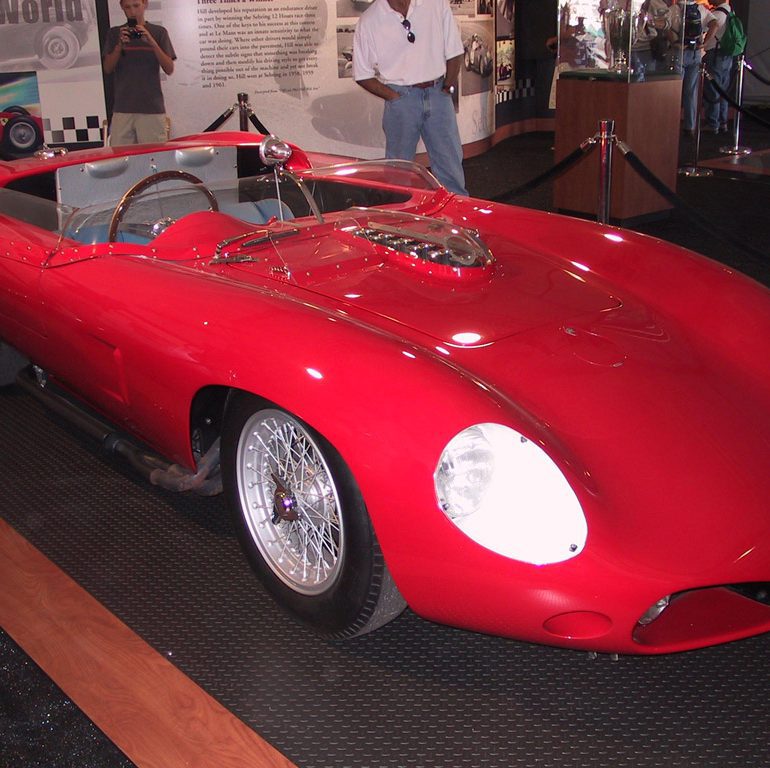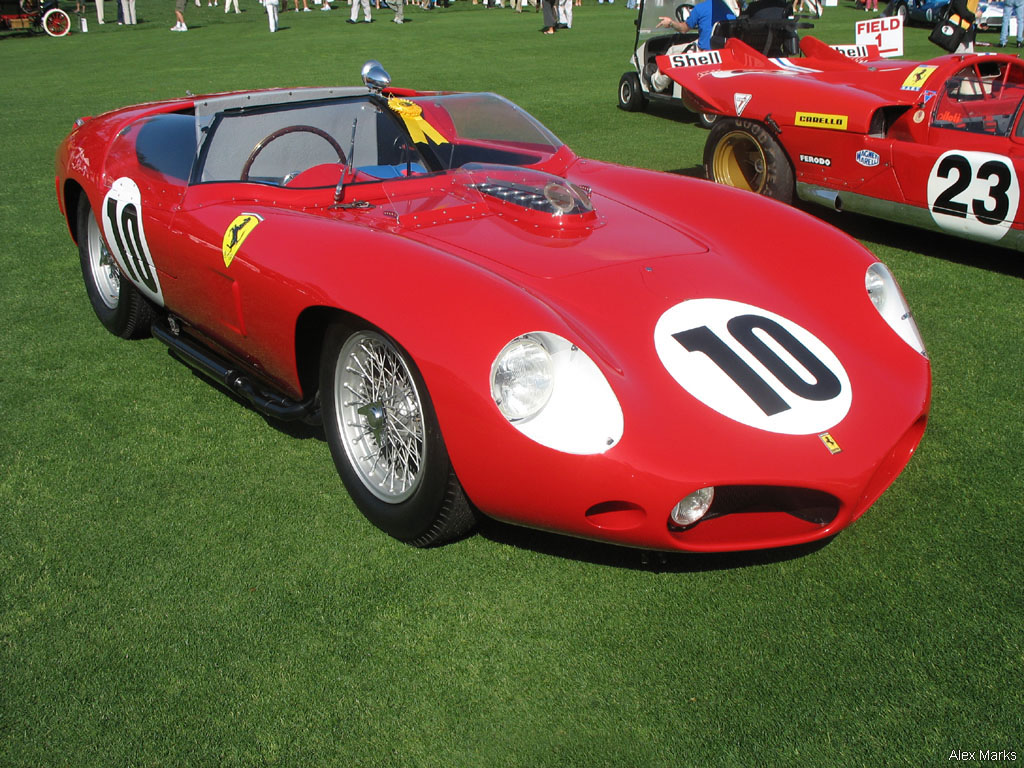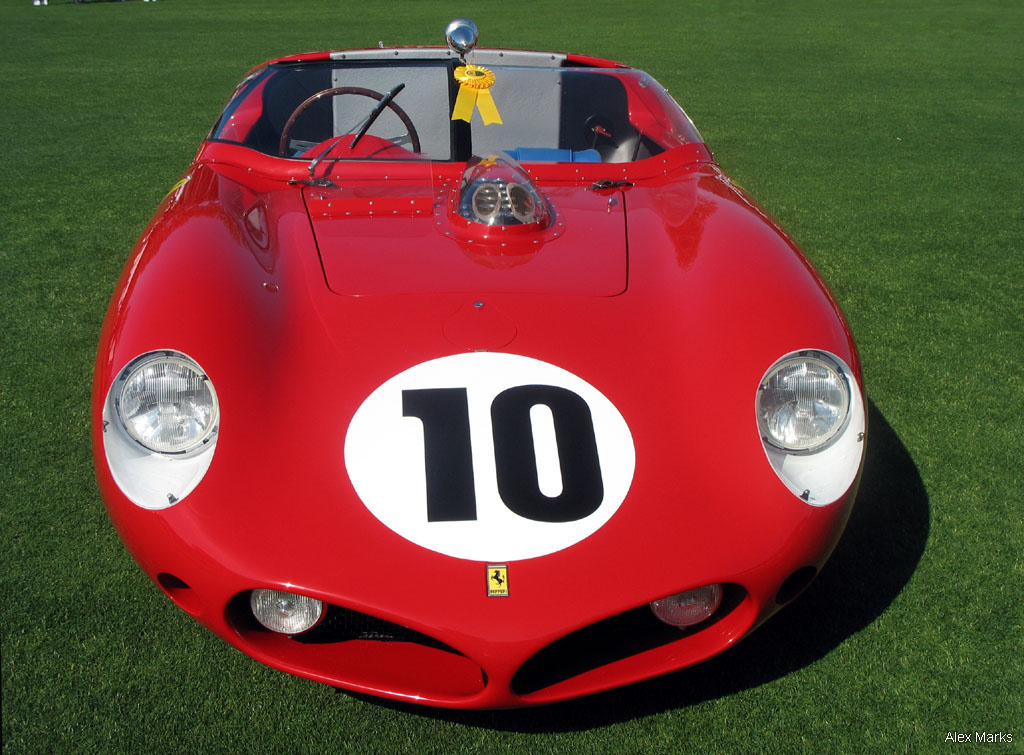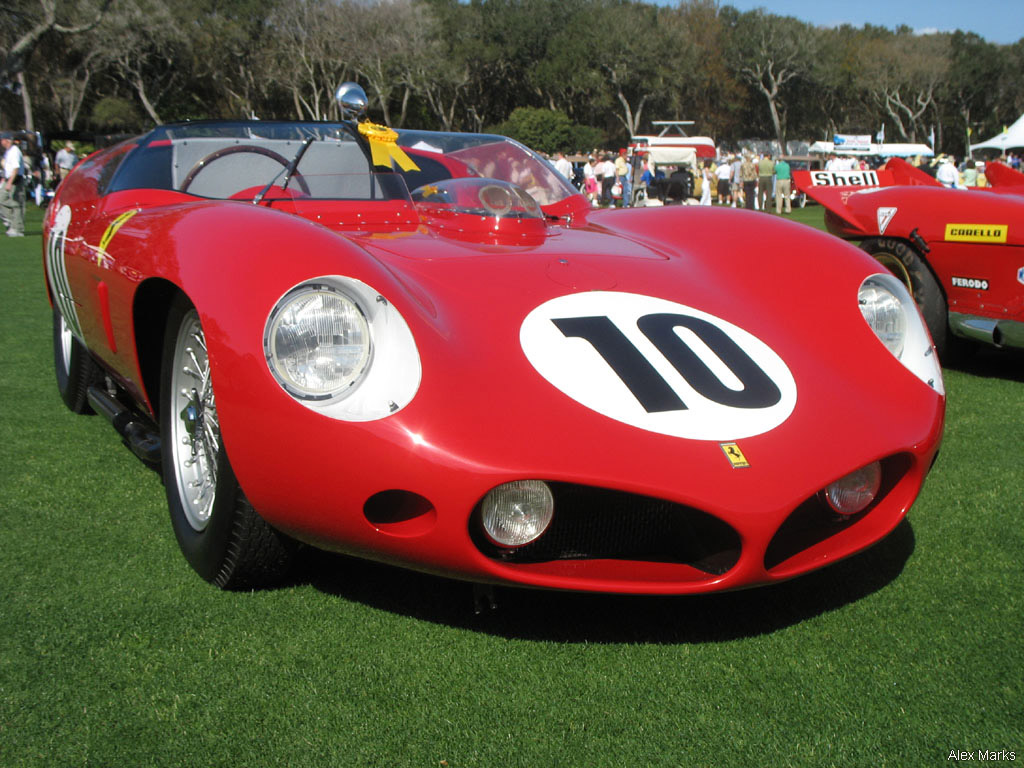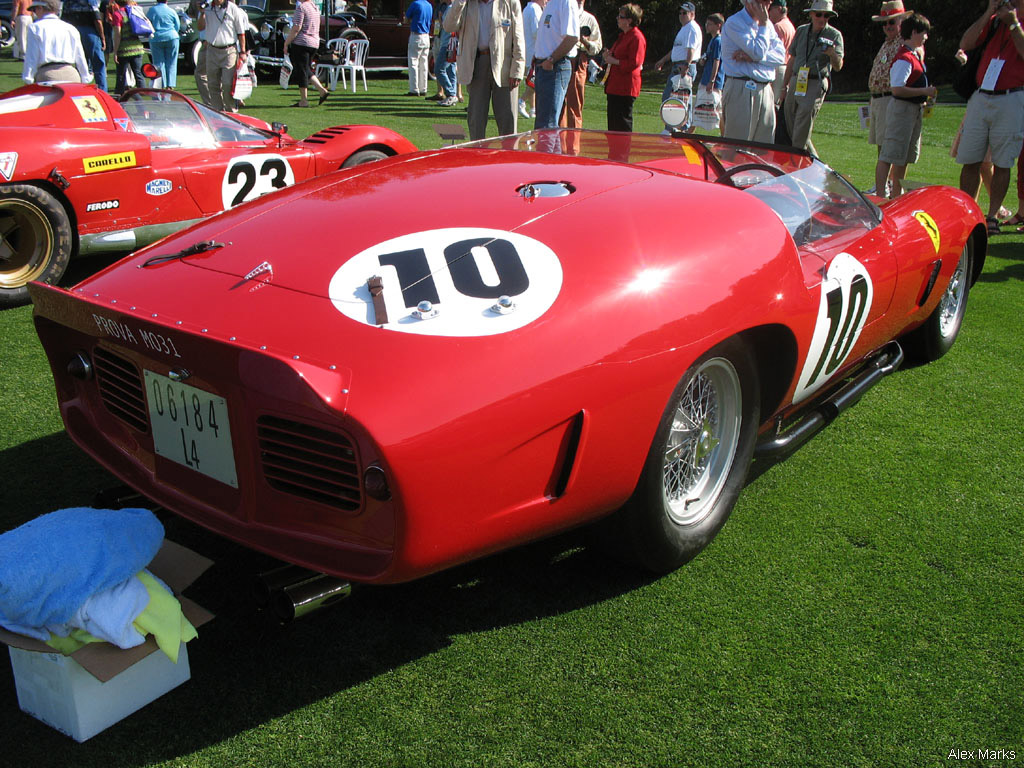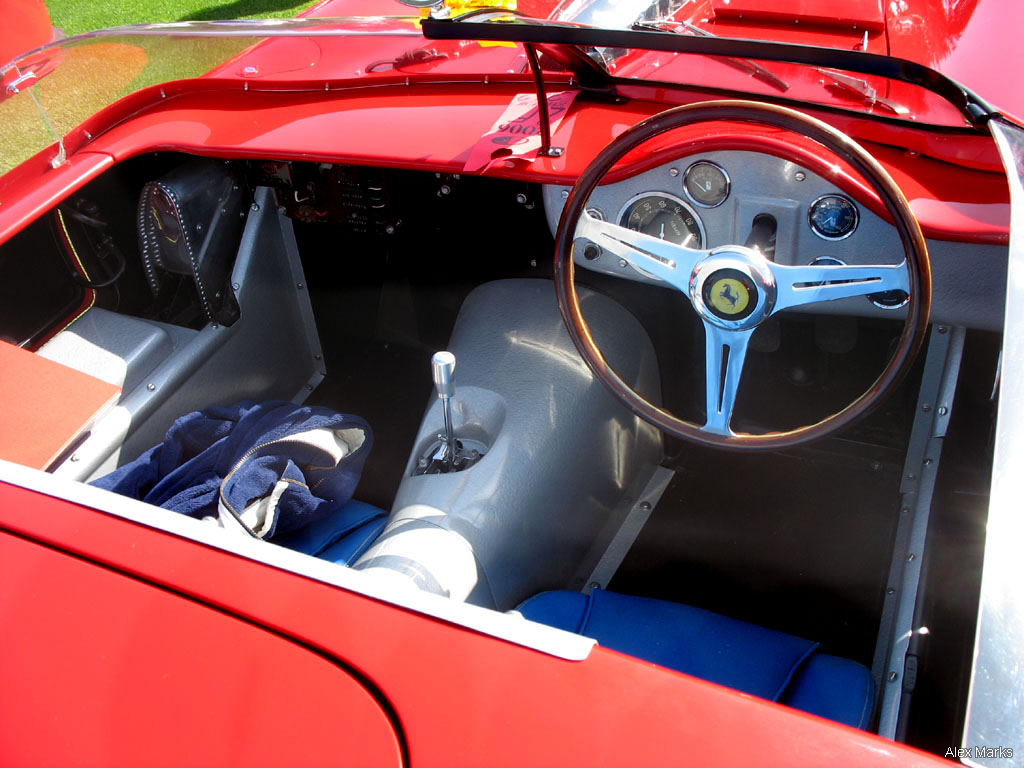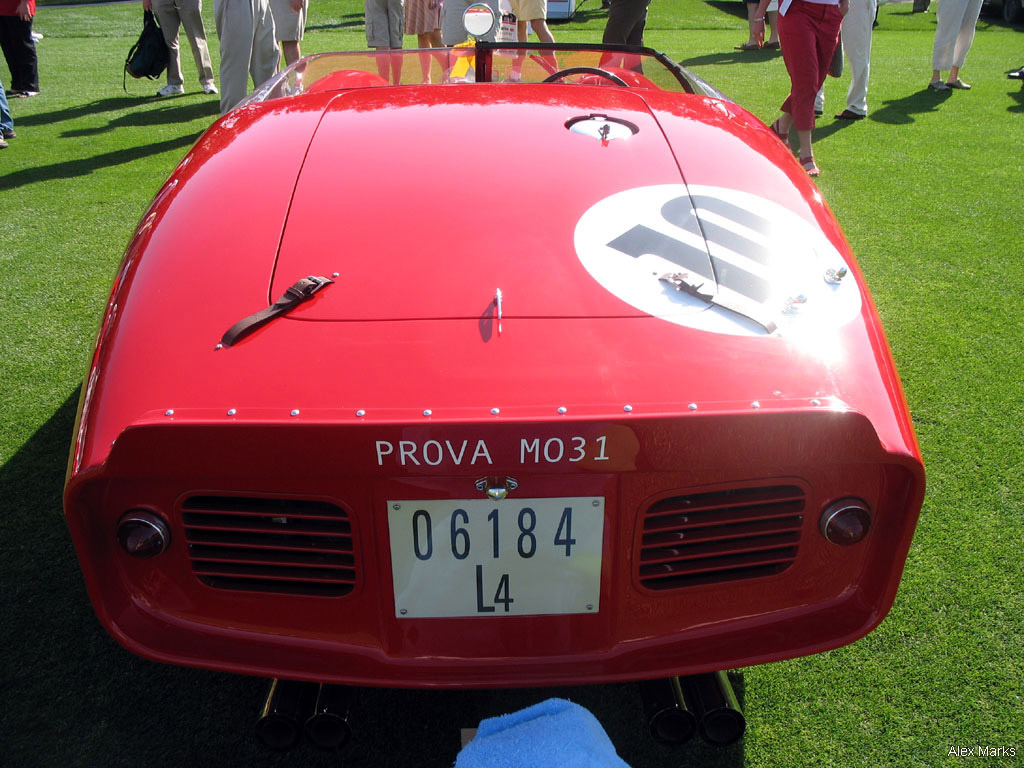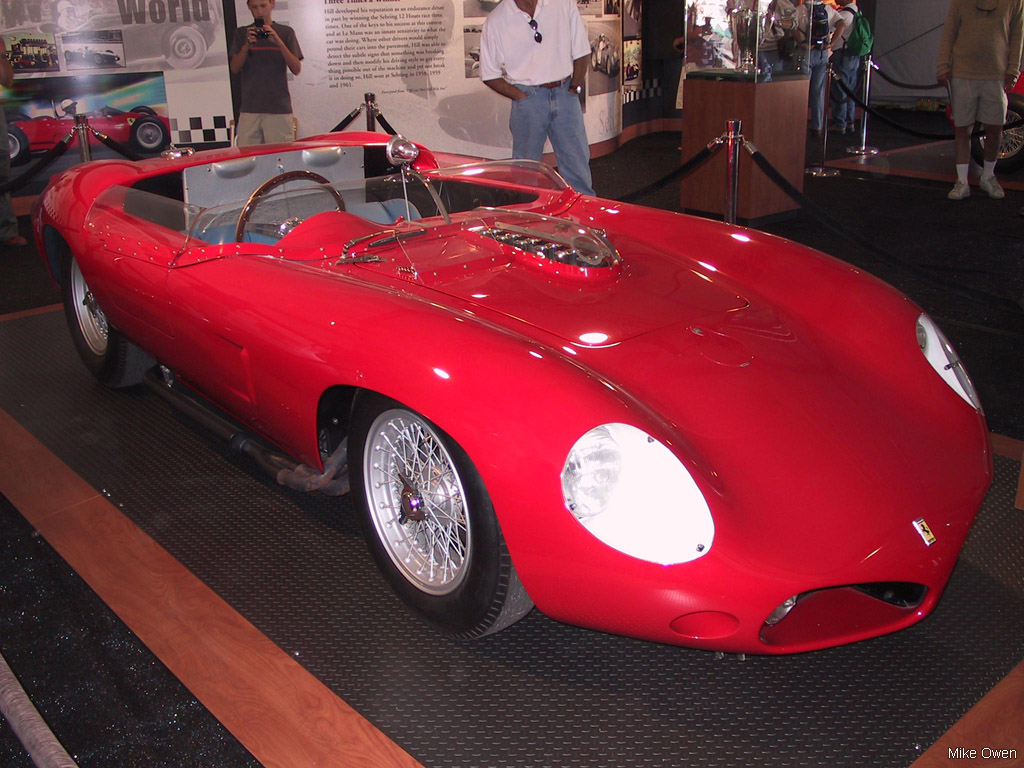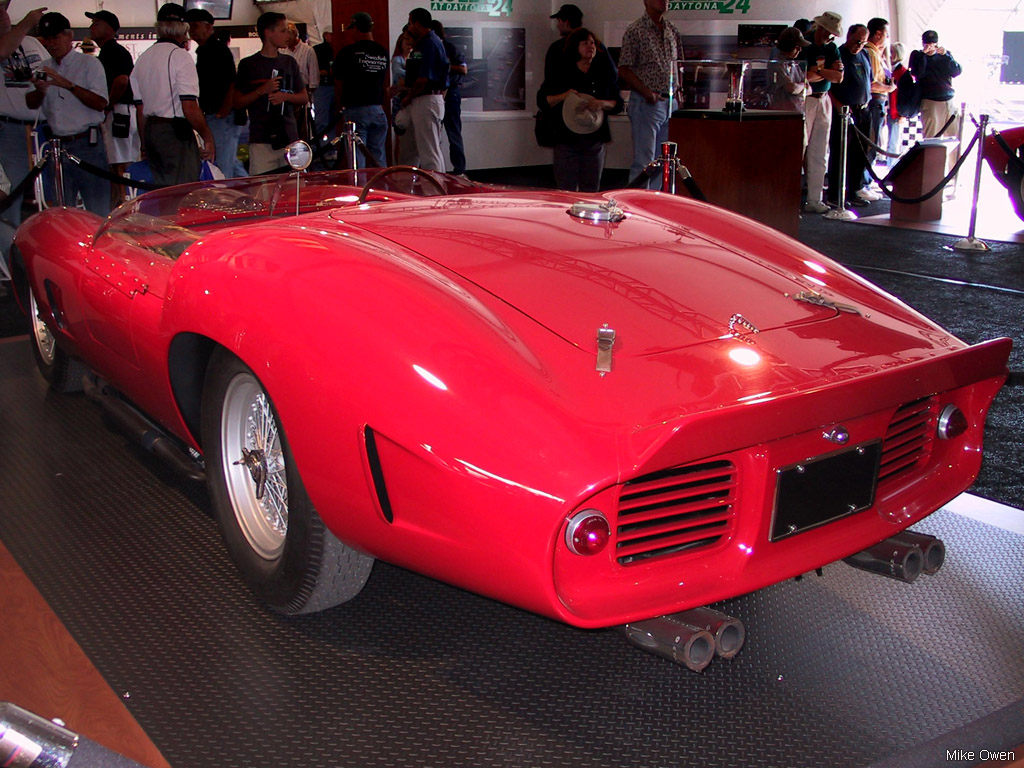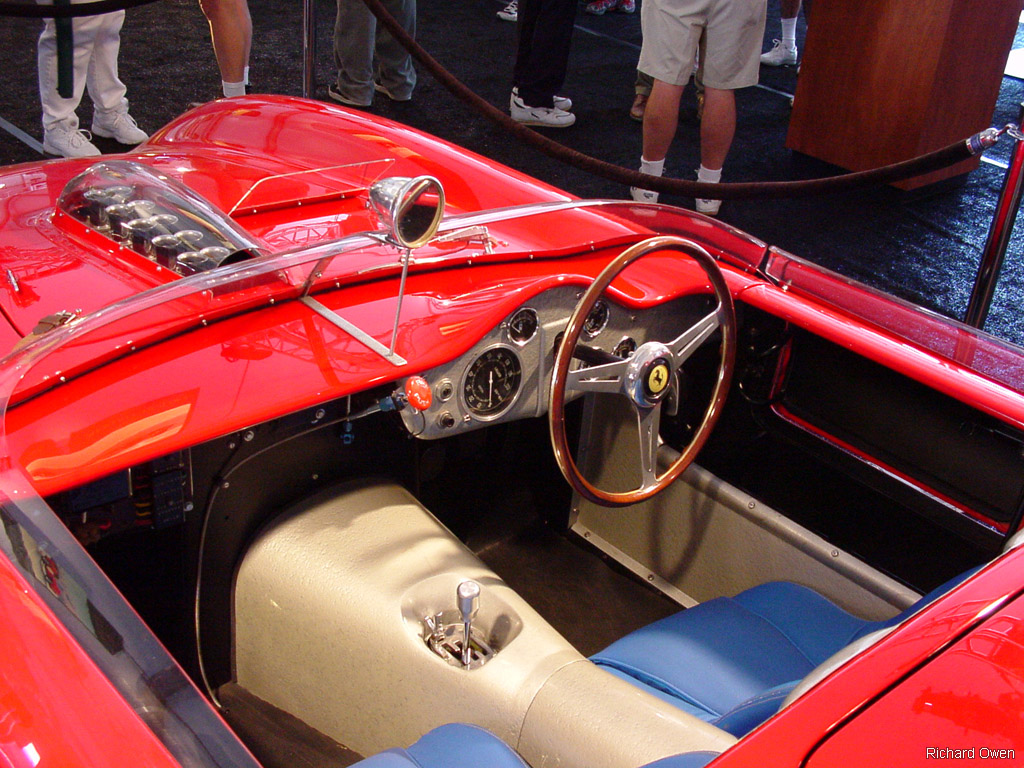1961 Ferrari 250 TRI61
Built to maintain Ferrari’s dominance in sports car racing, the TRI61 was Ferrari’s best and most developed weapon. It belonged to an evolving series of Testa Rossas which, by 1961, had already won many important endurance races and international championships for Ferrari.
Testa Rossas first appeared in 1958 as customer sports cars used by privateers to contest races in both the US and Europe. After an initial release, Ferrari continued development to exclusively supply their factory works team with competitive cars. These superior versions needed complicated craftsmanship and featured exotic materials that made them less viable as the customer cars they once were.
By 1960, three years of development meant the TRI60 included all-enveloping bodies, disc brakes, magnesium castings and an independent rear suspension straight form Formula One. New for 1961 was a distinct new twin-nostril body that had a taller, more cut-off rear end. The rather awkward design was used to direct airflow better over the car and improve overall stability. Underneath its skin, the TRI61 was supported by a much more lightweight and spaceframed chassis which easily made it the ultimate expression of the front engine Ferrari 250.
Probably the highlight of the TRI61’s career came when Hill/Gendebien drove #0794 to victory at the 24 Hours of LeMans. They would repeat the same result, the following year, in the last version of the Testa Rossa, the 330 TRI/LM.
While only four copies of the TRI61 were made, their contribution to Testa Rossa history was significant. One took LeMans, and together with the 246 SP, they secured the 1961 Championship. In total, the Testa Rossas won LeMans four times, and helped secure many World Sports Car championships from 1958 to 1962. Afterwards, they were completely replaced with mid engine counterparts.
Ferrari 250 TRI61 Photos & Image Gallery
See full 1961 Ferrari 250 TRI61 Gallery here
Ferrari 250 TRI61 Specs & Performance
| type | Racing Car |
| engine | Alunimum, 60 Degree, Tipo 128LM V12 |
| position | Front Longitudinal |
| aspiration | Natural |
| valvetrain | Chain Driven SOHC, 2 Valves per Cyl |
| fuel feed | 6 Twin-Throat 38 DCN Weber Carburettors |
| displacement | 2953 cc / 180.2 in³ |
| bore | 73 mm / 2.87 in |
| stroke | 58.8 mm / 2.31 in |
| compression | 9.8:1 |
| power | 234.9 kw / 315 bhp @ 7500 rpm |
| specific output | 106.67 bhp per litre |
| bhp/weight | 496.06 bhp per tonne |
| torque | 380.98 nm / 281 ft lbs @ 5500 rpm |
| redline | 8800 |
| body / frame | Aluminum Body over Tubular Steel Spaceframe |
| driven wheels | RWD w/Limited-Slip Differential |
| front tires | 5.5×16 Dunlop |
| rear tires | 6.5×16 Dunlop |
| front brakes | Dunlop Vented Discs |
| rear brakes | Dunlop Vented Discs |
| front wheels | F 40.6 x 14.0 cm / 16.0 x 5.5 in |
| rear wheels | R 40.6 x 15.2 cm / 16 x 6 in |
| steering | ZF Worm & Peg |
| f suspension | Unequal A-Arms w/Coil Springs over Shock Absorbers, Anti-Roll Bar |
| r suspension | Dual Wishbones w/Coil Springs over Shock Absorbers, Anti-Roll Bar |
| curb weight | 635 kg / 1400 lbs |
| wheelbase | 2324 mm / 91.5 in |
| transmission | 5-Speed Manual |


